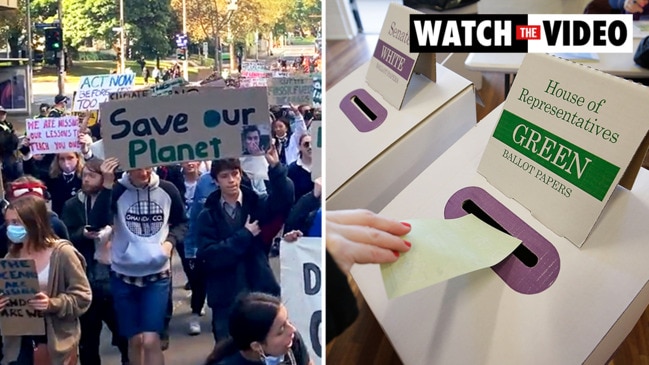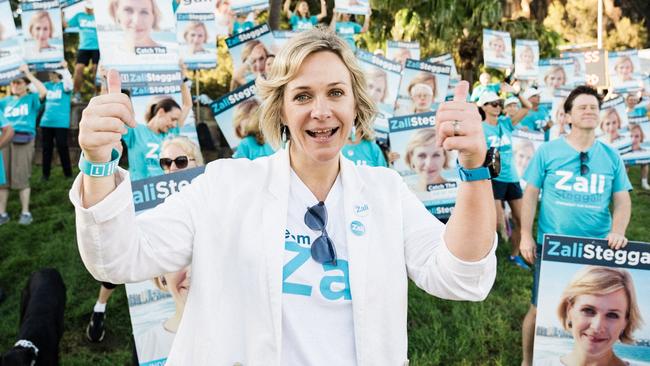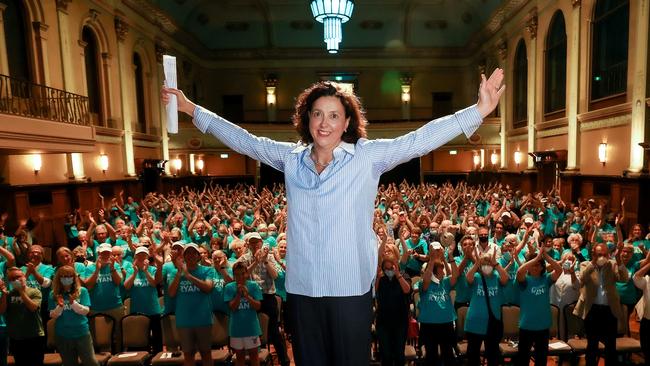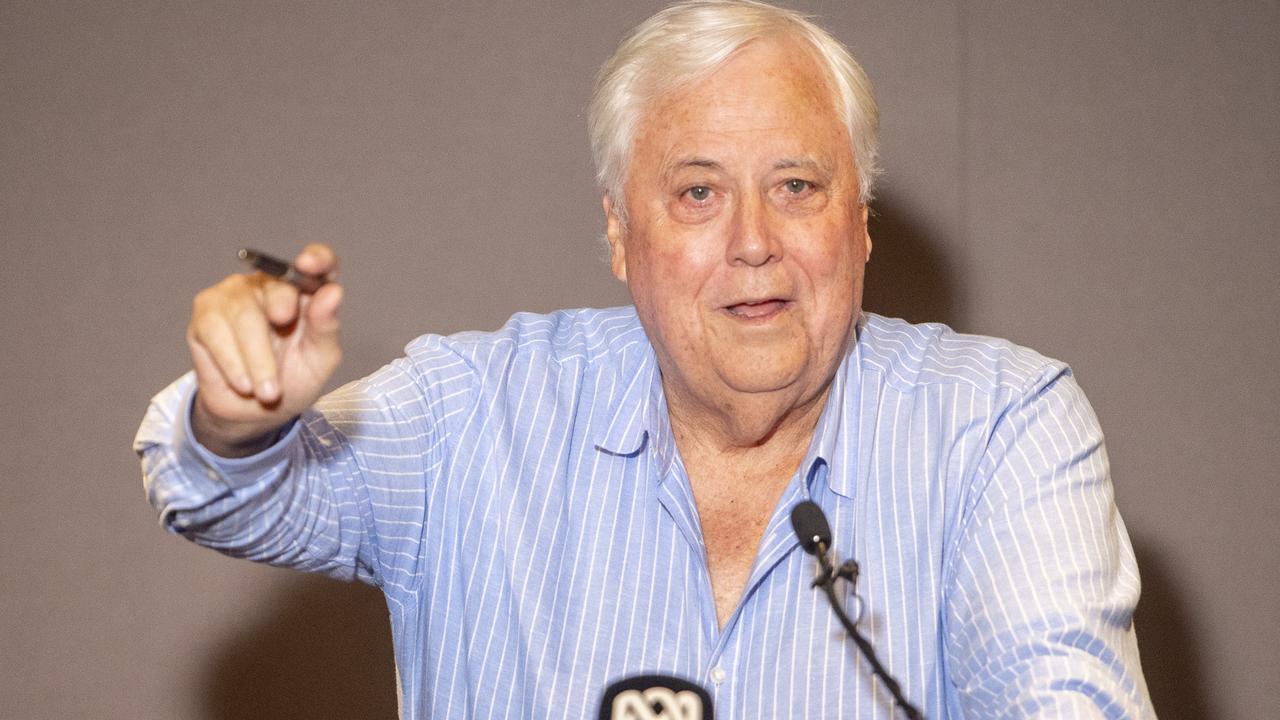Climate 200’s teal independents Zali Steggall and Monique Ryan hopes if they are voted in
Eating insects not beef and vaccinating cows by drone to produce less gas – this is Australia 2030 if ‘teal independents’ hold the balance of power after the election. Have your say and vote in our poll.

Federal Election
Don't miss out on the headlines from Federal Election. Followed categories will be added to My News.
Eating insects instead of beef, vaccinating cows by drone to produce less methane and building office blocks from timber – this is Australia in 2030 if “teal independents” hold the balance of power after the federal election.
Leading climate-focused crossbench candidates Zali Steggall and Monique Ryan want a 60 per cent cut to carbon emissions by the end of the decade in return for supporting a minority government, which betting agencies now rate as a strong 3/1 chance.
Ms Steggall’s office on Tuesday said Deloitte research had found that pursuing a “new growth pathway” could deliver 250,000 jobs – by 2070.
But top economic modeller Brian Fisher told this masthead that rapid decarbonisation would put hundreds of thousands of people out of work.
“These notions that there are all these extra jobs out there are wrongheaded,” Dr Fisher said.
In the lead up to the last election, Dr Fisher analysed Labor’s policy for a 45 per cent cut by 2030, concluding it would cost 167,000 jobs.
The impact of a 60 per cent reduction within eight years “would be substantially more significant,” Dr Fisher, the former head of the Australian Bureau of Agricultural and Resource Economics, told this masthead.

However, Dr Ryan – who is tipped to oust Treasurer Josh Frydenberg in the Melbourne seat of Kooyong – this week said “I don’t think this is something that is going to cost the economy at all.
“We are going to have the world’s cheapest power that we will obtain from wind and solar,” Dr Ryan told Sky News.
Asked what research had been done on how a 60 per cent cut by 2030 would change the economy, as well as which job areas might be hurt and what the costs would be, she said a “huge amount” of work had been done, including by the Australian Energy Market Operator (AEMO).
Dr Ryan’s office declined to provide to this masthead the specific research she was referring to.
As the electricity market operator, AEMO said it focused on emissions from the power industry, but added that it used “multisector modelling” from ClimateWorks.
Founded by Monash University, ClimateWorks has produced what appears to be the most detailed research into emissions cuts of the magnitude sought by the teal independents.

In a practical “guide” for Australian governments called Decarbonisation Futures, ClimateWorks says that for the nation to “play its part” in limiting global warming to 2 degrees Celsius, emissions must fall by 48 to 53 per cent by 2030; to contain the increase to 1.5C, a 74 per cent reduction is required by the end of the decade.
Even under the 2C aspiration, deep cuts to agricultural methane levels are a must, ClimateWorks found.
Its report said vaccinating livestock – using drones – could cut methane output.
Also, “increased awareness of the environmental impacts of diet could influence eating habits,” the report said. “In other sources of red meat, such as kangaroos, enteric fermentation (which produces methane) is up to 80 per cent lower per kilogram than beef … and other sources of protein are emerging, such as insects or plant-based meat alternatives.”

Dr Fisher said: “I don’t think it’s sensible to suggest that Australians are prepared to radically change their diet between now and 2030.”
To achieve deep carbon cuts, ClimateWorks found up to one in five new large buildings would have to be made from timber, not steel and cement.
The majority of new cars sold and a similar proportion of trucks would need to be electric and three-quarters of all power would have to come from renewables.
Dr Fisher questioned whether global supply chains could deliver Australia such high numbers of electric vehicles and said the reliability of power supply would be tested by low levels of coal-fired generation.
Labor has vowed to cut emissions by 43 per cent by 2030 compared to 2005 levels; the Coalition has a target of 26 to 28 per cent.
On Tuesday evening, the TAB’s odds on a Labor minority government were $4; a Coalition minority government was at $5.
Ms Steggall – who holds the Sydney seat of Warringah – declined to comment on the ClimateWorks report, as did Dr Ryan.
Got a story tip? Email us at federalelection@news.com.au
Know some goss or seen something in your electorate? Contact us at election.confidential@news.com.au
Originally published as Climate 200’s teal independents Zali Steggall and Monique Ryan hopes if they are voted in




